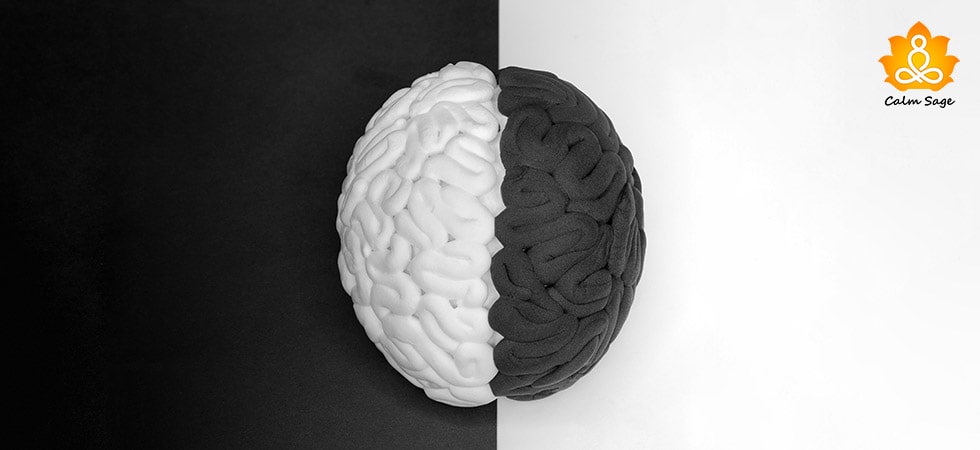Black And White Thinking – How Does It Affect Your Mood

How you think and see things tells much about your personality and impacts your mood and overall well-being. Yet, sometimes, people see things in two categories, black or white, and they can be quite rigid. This type of thinking is also called all-or-nothing thinking, and it can distort our perception and lead us to view situations, people, or even ourselves in polarized terms. But why do people think in this way? Are there ways to deal with this type of thinking?
Luckily, different strategies can help cope with it, and in this guide, we will explain black and white thinking and explore its effects on our mood and overall psychological state.
Understanding Black and White Thinking

Black and white thinking, as the name explains, is perceiving situations as positive or entirely negative, disregarding any room for nuance or gray areas. This rigid thinking can lead to a polarized perspective where only achievements and failures exist. Usually, early life experiences and cultural and societal norms influence this sort of thinking in an individual.
Those who grow up in rigid or authoritarian environments where flexibility or open-mindedness is not promoted often develop black and white thinking, and for them, a thing is either right or wrong, and there is no middle path.
How Black and White Thinking Affects You?
Black and white thinking affects a person in several ways. Here we enlist how it impacts.
1. The Impact on Mood and Emotional States
Thinking in black and white is living in extremes, affecting an individual’s thought processes and emotions. As things can be only right or wrong, emotions drastically fluctuate between highs and lows, which contributes to mood instability, cognition distortion, depression, and anxiety. Not only this, the thinking even affects self-esteem, making individuals perceive themselves as utter failures without acknowledging their accomplishments or areas for personal growth.
2. The Impact On Interpersonal Dynamics
When it comes to relationships, having a mindset and seeing things in absolutes can make it challenging to understand and empathize with others’ perspectives. This creates conflicts as people may find it difficult to find ground to communicate. Therefore, it is important to navigate the subtleties and value viewpoints. Overcoming the tendency for this thinking can result in interpersonal interactions and more harmonious relationships.
3. The Toll on the Body and Mind
When an individual engages in black and white thinking, it often contributes to stress, thus affecting physiological and psychological well-being. The constant ups and downs of emotions and inflexible thought patterns activate the body’s stress response, potentially leading to physical and mental health issues. This includes a weakened system, increased risk of issues, and other stress-related conditions.
Strategies for Breaking Free from Black and White Thinking
Recognizing the nuances and complexities in situations is essential in overcoming black and white thinking. This involves questioning all-or-nothing judgments and considering viewpoints.
1. Practice Kindness towards Oneself, with Understanding:
Self-compassion involves treating oneself with kindness, care, and understanding just as one would treat a friend. This practice helps combat the tendency to be overly critical and judgmental when thinking absolutes. Acknowledge and embrace your imperfections and limitations. This will allow you to build a compassionate perspective towards yourself.
2. Talk to a Therapist:
Therapeutic methods such as Cognitive Behavioral Therapy (CBT) effectively address thinking patterns. CBT assists individuals in identifying and challenging distorted thoughts, replacing them with adaptive viewpoints. As you work with a therapist, you can explore and confront your distortions, thereby developing a different outlook toward life.
3. Embrace Change and Flexibility:
Cultivating a growth mindset involves recognizing that personal growth is a process. It encourages an approach to life’s challenges, fostering adaptability in the face of uncertainties.
4. Build Resilience:
Develop the ability to bounce back from setbacks while adapting to changing circumstances. This shift in mindset will help counter the rigidity of black-and-white thinking. In addition, know the real-life stories of individuals who have overcome the limitations of this thinking.
To progress towards balance in your life, it is crucial to integrate new perspectives and mindsets and acknowledge and celebrate every milestone reached on your journey towards attaining balance. Even the smallest achievements remind you of your progress, offering motivation to continue toward a rounded perspective.
5. Practice Mindfulness and do Cognitive Restructuring:
Engaging in mindfulness meditation and cognitive restructuring can help individuals become more aware of their thought patterns. It also enables them to develop skills to challenge thinking patterns by reframing them. Here are a few ways you can do it.
6. Body Scan Meditation:
Sit in a quiet, comfortable space. Close your eyes and bring your attention to different body parts. From your toes up to the top of your head, notice any sensations without judgment. This will help connect with physical sensations, promoting a sense of grounding and presence.
7. Breath Awareness:
Focus your attention on your breath, observing the inhales and exhales without trying to control them. This practice will help anchor the mind to the present moment, promoting relaxation and reducing stress.
8. Mindful Journaling:
Write down your automatic thoughts, especially those related to black and white thinking, and try to reflect on alternative perspectives. This will help you to observe thought patterns and work through them with a mindful approach.
Navigating Shades of Gray
By understanding how black and white thinking affects our mood and overall well-being, you can take steps to break free from this distortion. Through self-awareness, consistent practice, and seeking support, when necessary, you can develop a mindset that’s both balanced and resilient, leading to improved mental and emotional health.
Embracing life’s complexities and appreciating its nuances allows for a human experience. So, never stop learning. Allow yourself to learn and make mistakes. Stop judging and criticizing yourself or others, as it will stop your growth.
Black and white is not how you can live life. There is always a gray area that you need to pay attention to. If you skip it, you might always feel overwhelmed.




















